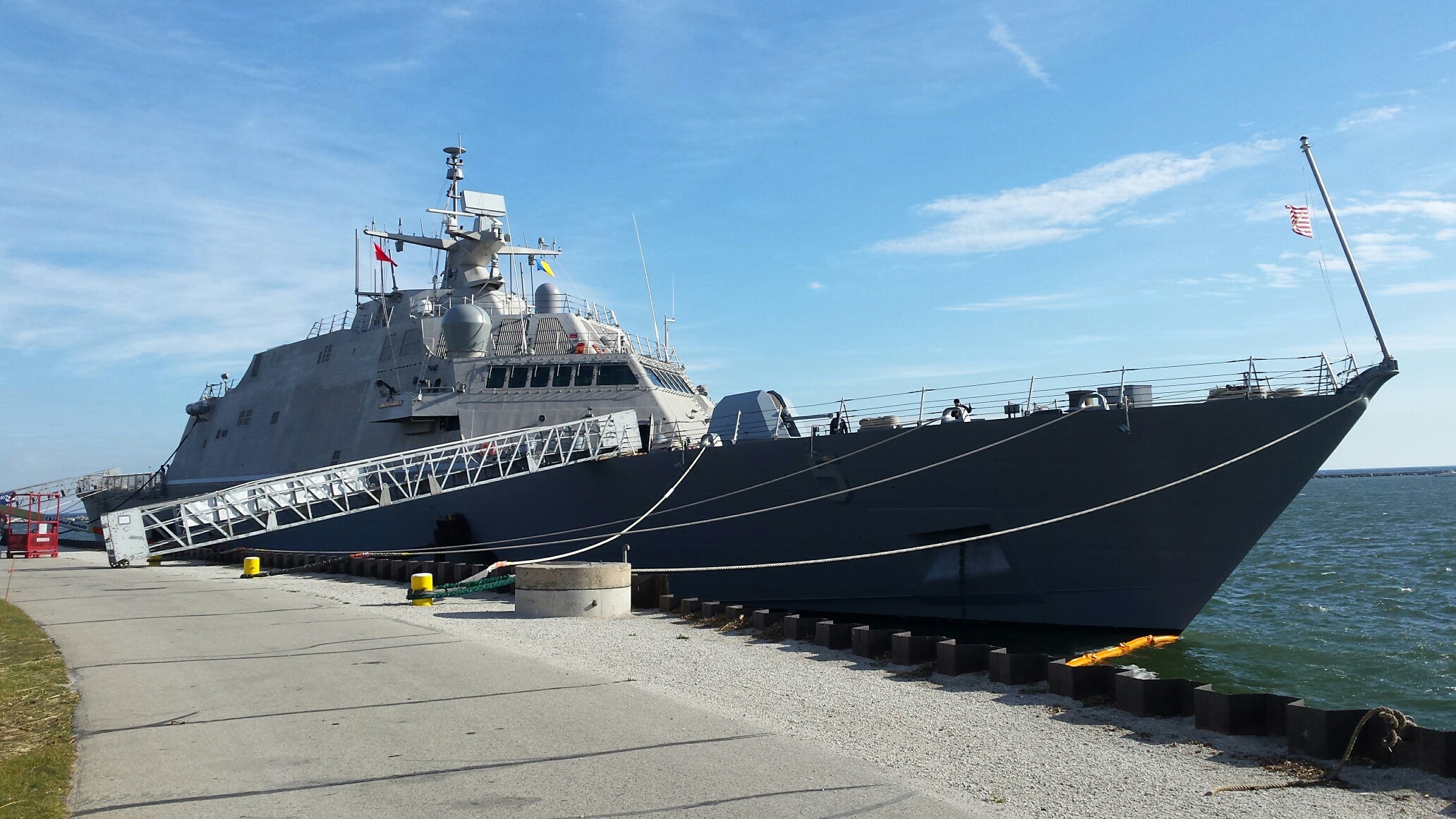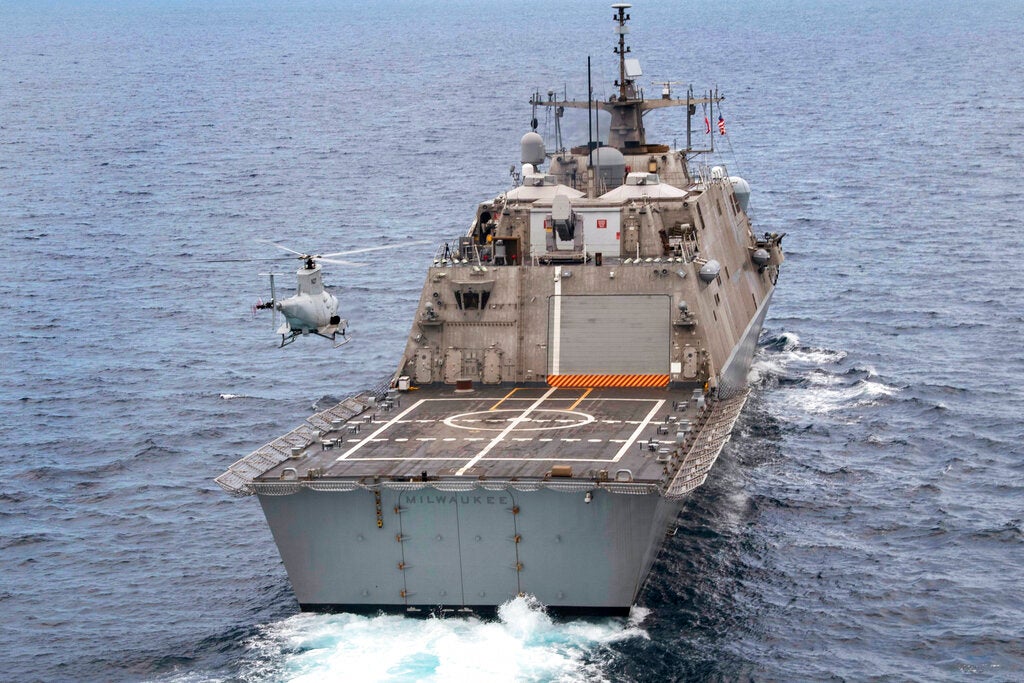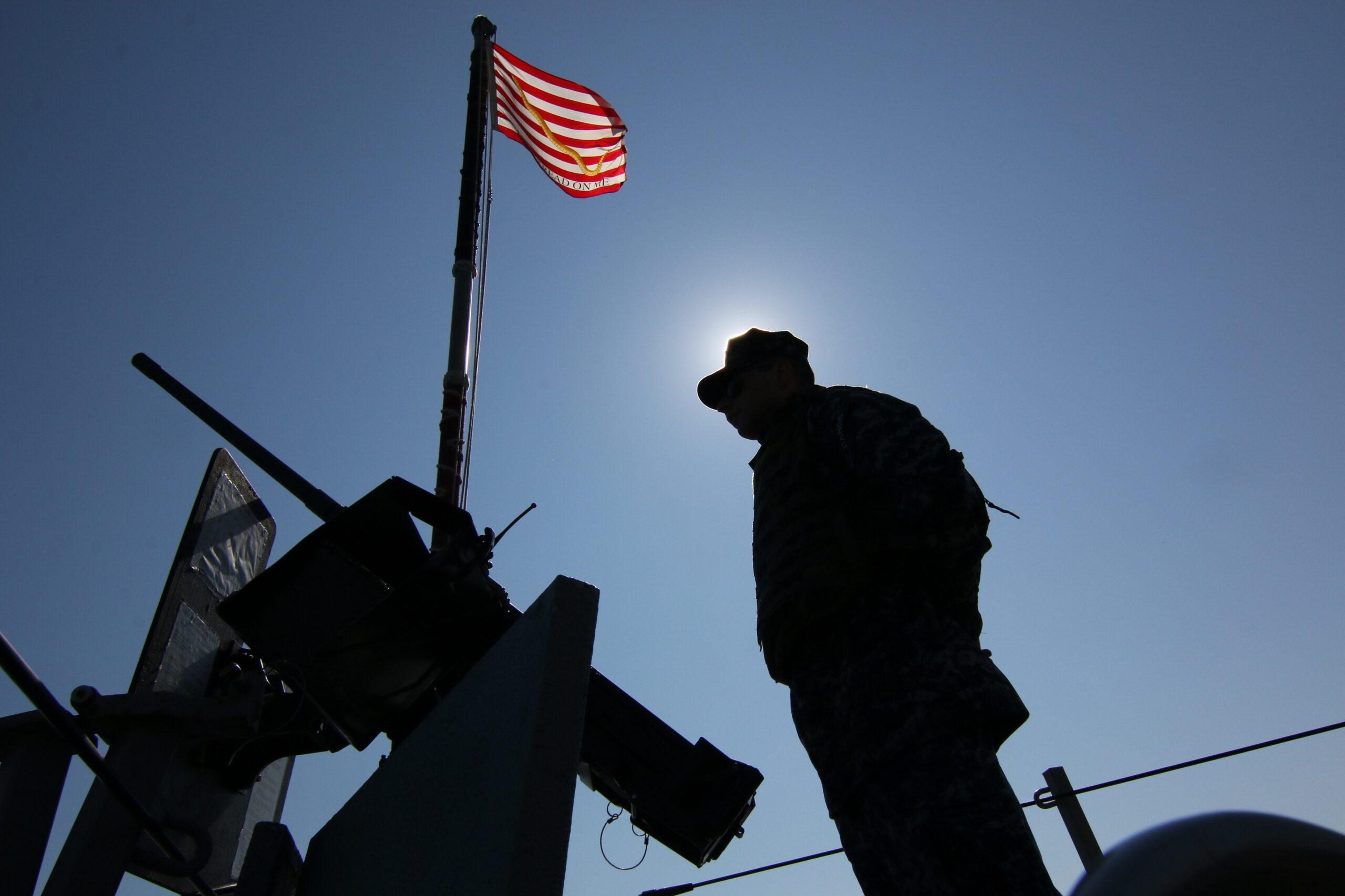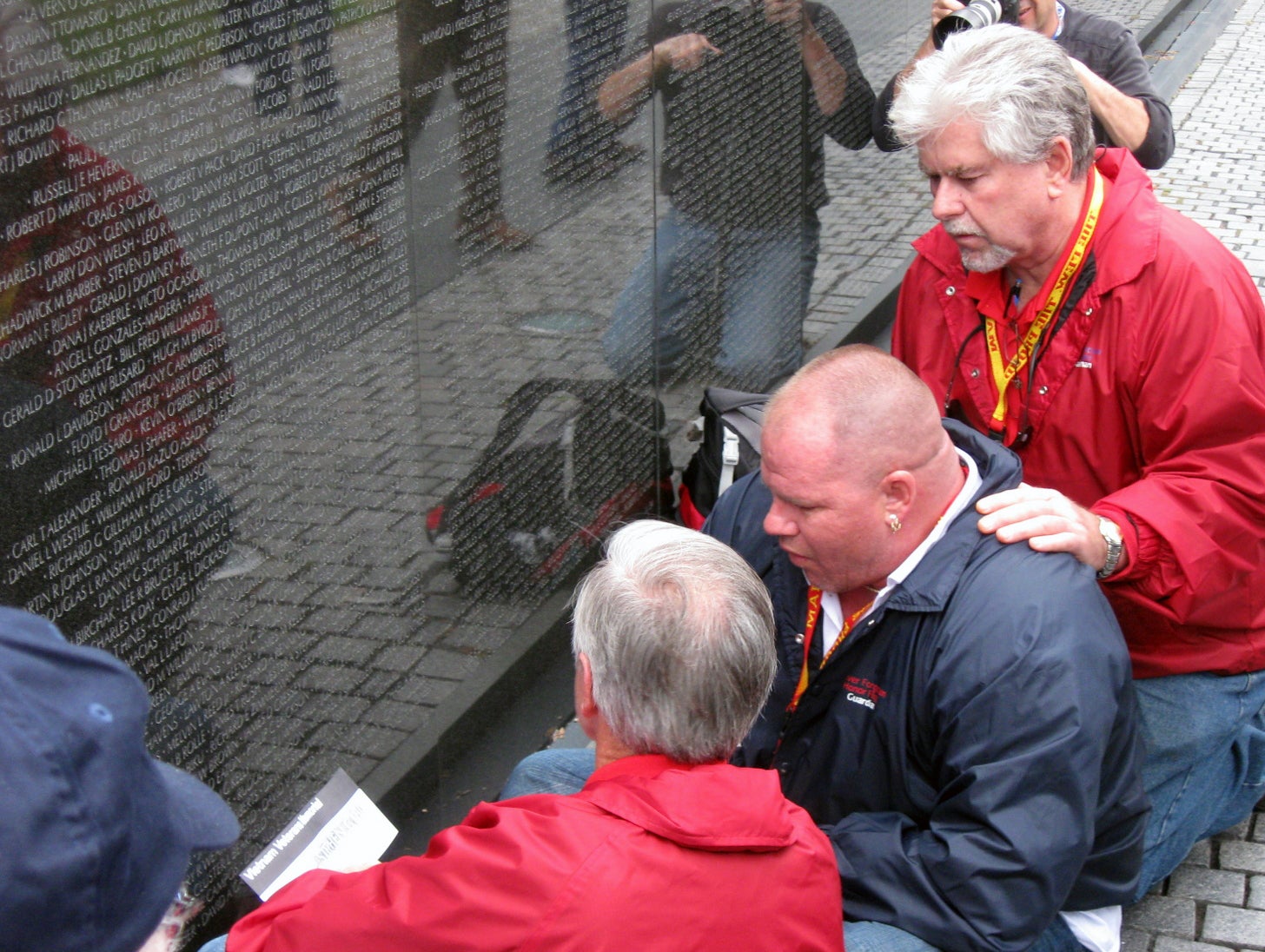Thousands of people are expected at Milwaukee’s lakefront Saturday, for the commissioning of the USS Milwaukee. The Navy says the ship, built in Marinette, will soon head across the globe.
The deployment comes at a time of increased terrorism and other potential threats, but some analysts continue to question whether the ship’s design and performance are up to the task of modern combat.
The Milwaukee is what’s known as a littoral combat ship, or LCS. It’s a ship type that the Navy only began using a few years ago.
Stay informed on the latest news
Sign up for WPR’s email newsletter.

Lt. Alexander Gallagher on the USS Milwaukee’s bridge. Chuck Quirmbach/WPR
“Basically what it can do is walk sideways without the use of tugs,” said navigator Lt. Alexander Gallagher, standing on the ship’s bridge. “It can corner much faster and can get into shallower areas than other ships can. There’s no screws or rudders on the bottom of the ship to be damaged.”
Instead, water jets drive the $400 million vessel, with the power coming from natural gas and diesel engines.
Also special about the LCS, according to Navy, is the ability to switch into different types of combat mode more quickly.
Inside the ship near the stern, Cmdr. Kendall Bridgewater went over how different combat equipment such as anti-mine or submarine gear or remotely-operated craft will be loaded onto the Milwaukee.
“The way we load these mission packages on board the ship is through this hatch over our heads,” Bridgewater said. “So as we come ashore and need to change out a mission module, we have a shore-based crane lift off this hatch and then we drop these modules in.”

U.S. Navy Cmdr. Kendall Bridgewater. Chuck Quirmbach/WPR
Bridgewater called the modular weapons systems a “plug-and-play” concept. But the modular design has problems, according to Eric Wertheim. He’s the author and editor of the “Naval Institute Guide to Combat Fleets of the World.” While Wertheim says the LCS has many strengths, there have been logistical concerns.
“So for instance, let’s say you’re doing warfare, hunting submarines, and then they say, ‘Wait a second, our big problem now is mines.’ Now you’ve got to go back to your port, swap the module, swap part of the crew and then come back out and do the mission,” said Wertheim. “Many argue, understandably so, that a larger ship that’s multi-missioned does not need to swap those modules, does not need to swap it’s crew.”
Wertheim, said the other main concern has been whether the LCS has enough firepower to go up against vessels from large nations like Russia or China, that some argue are bigger threats than they were a decade ago when the LCS project began.
The defense contractor for the Milwaukee, Lockheed Martin, has said changes are coming to the LCS. Company Vice-President Joe North said stay tuned.
“Industry hasn’t seen those specifications yet. They’re still working them inside the Navy,” said North. “But that ‘frigate’ variant of LCS will have those new requirements they’re looking for. But the current design meets everything the Navy asked for.”
North also said the modular weapons systems are already on two littoral ships that are deployed in Southeast Asia, and that testing for another mission package is on schedule.
Bridgewater of the USS Milwaukee said he was aware of the criticisms of the LCS ships early on, but defended the program.
“The shipbuilding process is a lengthy process. Normally you’re talking 20 years from conception to putting it in the water,” he said. “We did it in less than half that time.”
The projected life of the Milwaukee is about 25 years.
Wisconsin Public Radio, © Copyright 2024, Board of Regents of the University of Wisconsin System and Wisconsin Educational Communications Board.




